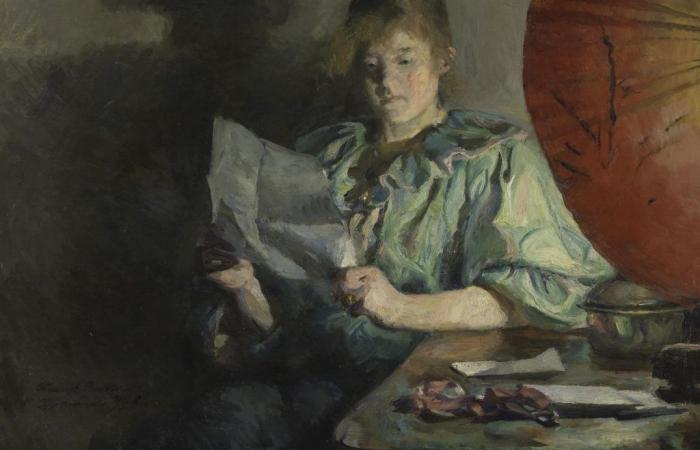In her unfinished self-portrait, placed as a preamble to the exhibition at the Musée d’Orsay, Harriet Backer, aged 65, stares at us with a fierce look. We read in her eyes the unfailing determination of the one who led her life as an artist and a woman as she saw fit. “If I had gotten married, I would have stopped painting but I was too good for that,” she confided to her friend Kitty Kielland, a landscape painter and committed feminist, with whom she shared an apartment-studio for decades.
Coming from a wealthy and cultured family (her father, a music lover, was consul and shipowner), Harriet Backer was destined for the monotony of a bourgeois existence. This was without counting his passion for painting and his strength of character. At 21, she convinced her parents to let her and her younger sister Agathe, a musician, study abroad. With astonishing freedom for the time, they traveled from Berlin to Cologne, from Florence to Rome, where Harriet thrived on her visits to museums.
Ten years in Paris
His admiration for the masters of the Dutch Golden Age, from Rembrandt to Vermeer, is reflected in his first paintings, historical genre scenes in brown tones and carefully crafted. In Munich, a meeting place for Norwegian artists, she made friends with other women painters, with whom she continued her training by hiring teachers and models, the Academy of Fine Arts being reserved for men .
It was in Paris, where she remained for ten years, that her talent, detected by her teacher Léon Bonnat, came to light. Dazzled by Monet and the daring impressionists, she abandoned academic rigor, freed her touch and brightened her palette, as in this delicate Blue interior (1883), which marks the beginning of a long series of representations of alone women, sewing, reading, watching over a cradle, in the light of a window or a lamp. Fragile moments of calm, stolen from domestic responsibilities, painted in interiors in soft tones, of which Harriet Backer excels at conveying the peaceful, almost collected atmosphere.
Obsession with light effects
Throughout her career, marked by nearly 230 paintings (a limited corpus due to her perfectionism), Harriet Backer will never stop experimenting, changing her style, while maintaining an obsession with the play of light and reflections. colored on the surfaces. Here, the lime walls of the peasant houses; there, the varnished woodwork of small medieval churches, typically Norwegian, which she painted at a time when the country’s cultural autonomy was asserting itself in the face of former Danish domination.
This humanist takes a sensitive look at those close to her, at the “little people” of her time, at the details of everyday life. Supported by loyal patrons and by the State (via scholarships and early purchases), it in turn encouraged young talents, by joining the acquisition committee of the National Gallery, and by creating, in 1891, a school mixed art, the first in Norway. A discreet generosity, like his painting.
“Harriet Backer (1845-1932), the music of colors”, until January 12, at the Musée d’Orsay. Esplanade Valéry-Giscard-d’Estaing, 75007 Paris. www.musee-orsay.fr






